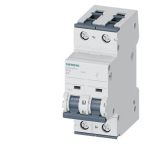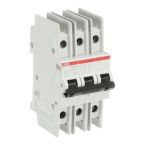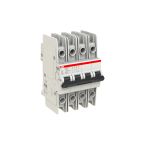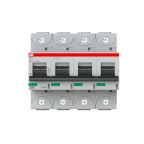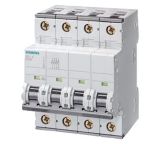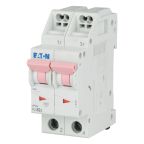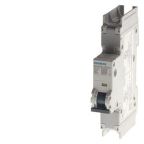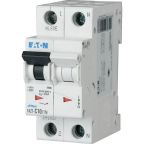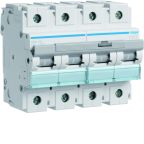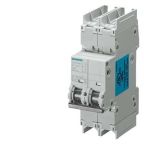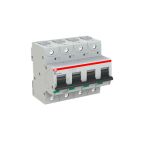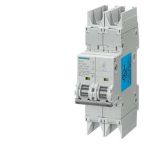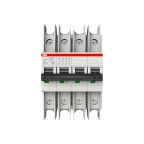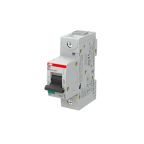MCBs
CBs, or Miniature Circuit Breakers, are electrical devices designed to protect an electrical circuit from damage caused by overcurrent. In the Philippines, where both urban density and rural electrification present unique challenges, miniature circuit breakers play a critical role. They ensure consistent power delivery and protect against overloads in environments ranging from high-rise buildings in Manila to the more remote barangays. This adaptability makes MCB miniature circuit breakers indispensable in modern and traditional Filipino electrical setups.
How Does a Miniature Circuit Breaker Work?
MCBs automatically disconnect the electrical circuit when they detect a current exceeding the rated capacity of the circuit. This action helps prevent overheating and potential damage to the wiring, appliances, or other connected devices.
For instance, AC (Alternating Current) miniature circuit breakers are essential for managing the frequent power surges and drops, which are common in areas prone to power instability, effectively managing abrupt voltage changes to protect electrical setups.
In contrast, DC (Direct Current) miniature circuit breakers are fundamental in solar power systems, ensuring that the direct current output from solar panels is regulated and safe, protecting the equipment from potential damage due to overcurrent.
What are the Different Types of Circuit Breakers?
MCBs come in different types, including Type B, C, and D, each designed to trip at different levels of overcurrent. The choice of MCB type depends on the specific characteristics of the electrical load it protects.
- Type B: A single pole miniature circuit breaker, primarily suitable for domestic installations. It controls one circuit phase, making it effective for individual circuits such as those in residential lighting or single-appliance setups. It trips when the current reaches between 3 and 5 times the rated load current.
- Type C: Designed for applications with higher inrush currents, such as motors and transformers. It trips when the current reaches between 5 and 10 times the full load current.
- Type D: Intended for circuits with significant inrush currents, like those associated with high-powered equipment. Trips between 10 and 20 times the full load current.
Within these types, some advanced models of MCB breakers may include earth leakage protection. Earth leakage miniature circuit breaker offers an additional layer of safety by monitoring and tripping the breaker when it detects current leakage to the earth, which helps prevent potential electric shocks and fires. This functionality is integrated seamlessly with the standard overcurrent protection, enhancing safety in both residential and commercial installations.
Tripping Mechanism of MCBs
MCBs or mini circuit breakers use different tripping mechanisms to ensure electrical safety.
- Thermal Operation: In a mini circuit breaker, a bimetallic strip heats up and bends when the current is too high. This bending breaks the circuit, stopping the flow of electricity to prevent overheating from prolonged overcurrent conditions.
- Magnetic Operation: This mechanism uses an electromagnet that strengthens as the current increases. When the current exceeds a safe level, the electromagnet turns a switch to break the circuit, instantly reacting to short-circuit currents.
- Combined Tripping: This mini circuit breaker combines both thermal and magnetic mechanisms. It uses the bimetallic strip to handle slow, gradual increases in current (prolonged overcurrent) and the electromagnet to respond quickly to sudden spikes (short-circuit currents), ensuring comprehensive protection.
Advantages of MCBs over Fuses
Miniature circuit breakers and fuses are both essential components used to protect electrical circuits from overcurrent. While both serve the same primary purpose, they differ significantly in functionality and convenience.
Like MCBs, fuses are traditional safety devices that break the circuit when the current exceeds a safe level. However, they must be replaced after each event, which can be inconvenient and time-consuming.
In contrast, MCB breakers offer several significant advantages. An MCB can be reset after tripping, eliminating the need for replacements and reducing downtime and maintenance costs. Additionally, MCB electrical breakers provide more accurate overcurrent detection, ensuring superior protection for your circuits. They also simplify fault identification, allowing for quicker troubleshooting.
Selecting the Right MCB
When selecting a miniature circuit breaker or MCB for environments like the Philippines, it’s crucial to address specific local challenges and requirements:
- Climate Resilience: Choose MCBs that are rated for tropical climates, capable of withstanding the high humidity and frequent thunderstorms common across the archipelago.
- Current Rating: Ensure the MCB can handle unexpected surges, a common issue during the rainy season when lightning strikes can cause sudden increases in power line voltage.
- Tripping Curve: Type B MCBs are ideal for residential areas where most appliances are less likely to cause inrush current. In contrast, type C or D should be used in commercial settings, where equipment like commercial refrigerators and air conditioners are common and require more robust protection.
- Pole Configuration: For homes in the rural Philippines, single-pole MCBs are often sufficient. However, for businesses and infrastructures, such as in Manila’s high-tech zones, 3 phase miniature circuit breakers are necessary to handle the complex electrical setups.
- Voltage Compatibility: Ensure the MCBs are compatible with the Philippines’ voltage standard of 220 volts to avoid operational failures.
- High Break Capacity: In regions with substantial electrical infrastructure, it is crucial to use MCBs with high break capacities. These MCBs can safely interrupt large amounts of electrical current that may occur during faults, preventing equipment damage and reducing fire risks.
- Consider Cost and Features: While assessing the miniature circuit breaker price, prioritize features that offer reliability and ease of maintenance. This is essential for areas with less frequent access to technical services.
You can learn more in our MCB guide.
Where are MCBs installed?
MCBs are installed directly onto distribution boards, which are housed within miniature circuit breaker boxes in both residential and commercial buildings. These mini circuit breaker panels are structured to organize and secure multiple MCBs, facilitating clear and safe electrical distribution. Typically, MCBs are mounted on DIN rails—a standard type of rail used for mounting circuit breakers and other electrical devices inside the breaker box.
This setup, often integrated with residual current devices (RCDs), ensures comprehensive protection and easy electrical system maintenance.
How to Reset an MCB?
After tripping due to overcurrent, miniature circuit breakers can usually be reset manually. However, it is crucial to investigate and address the cause of the overcurrent before resetting to avoid potential hazards.
MCBs play a vital role in electrical safety by preventing electrical fires and protecting equipment from damage caused by excessive current. They are an integral part of modern electrical installations, contributing to the overall reliability and safety of electrical systems.
Safety Precautions
Here's how to ensure electrical safety when handling miniature circuit breakers:
Installing Miniature Circuit Breakers
- Ensure power is completely turned off at the main MCB breaker to avoid electrical shocks.
- Use insulated tools and wear protective gear, such as rubber gloves and safety glasses.
Resetting Miniature Circuit Breakers
- Before resetting, investigate why the breaker tripped. Look for blown fuses, overloaded circuits, or faulty appliances.
- If you identify the culprit (e.g., a faulty appliance), unplug it before resetting. If it's an overload (too many devices), reduce the load on the circuit.
- Once you're sure it's safe, turn the breaker firmly to the 'off' position first. Then, flip it back to the 'on' position. Ensure it clicks into place securely to restore power safely.
Buy Miniature Circuit Breakers in the Philippines
As you consider enhancing your electrical systems, it's important to choose components that offer reliability and safety.
RS offers a comprehensive selection of high-quality miniature circuit breakers in the Philippines from industry-leading brands, including ABB, Siemens, Schneider Electric, Eaton, Rockwell Automation, and Lovato.
Take advantage of our competitive miniature circuit breaker prices in the Philippines today. Additionally, integrate our power relays with your MCBs for enhanced circuit management and safety. Also, consider our range of motor circuit breakers, designed to provide optimal protection for high-power motors and machinery, complementing your overall electrical system efficiency and security.
Popular Searches
Related links
- A Complete Guide to Miniature Circuit Breakers (MCB)
- Miniature Circuit Breaker
- S202M-C10 Miniature Circuit Breaker
- Siemens SENTRON Protective Cap for use with N Miniature Circuit Breaker
- Eaton Z-SV Contactor Bridge for use with FAZ-NA Miniature Circuit Breaker, FAZ-RT Miniature Circuit Breaker
- Miniature circuit breaker 1p
- Miniature circuit breaker 1p
- Miniature circuit breaker 1p
